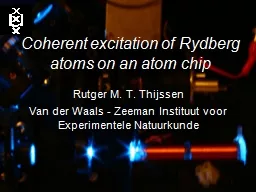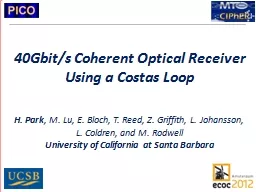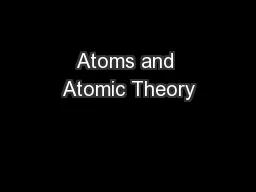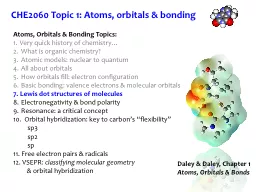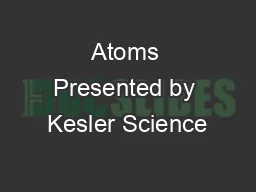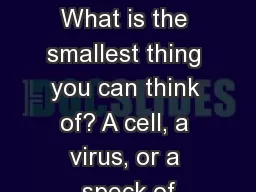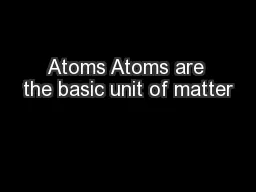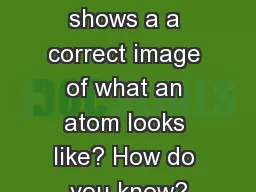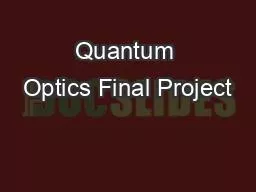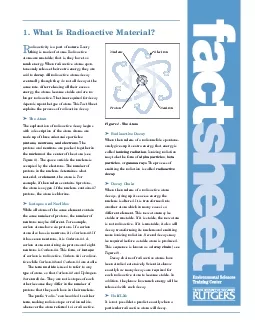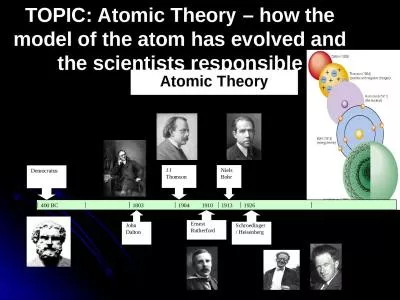PPT-Coherent excitation of Rydberg atoms on an atom chip
Author : pasty-toler | Published Date : 2016-04-03
Rutger M T Thijssen Van der Waals Zeeman Instituut voor Experimentele Natuurkunde Abstract In Amsterdam We have recently produced the first twodimensional lattice
Presentation Embed Code
Download Presentation
Download Presentation The PPT/PDF document "Coherent excitation of Rydberg atoms on ..." is the property of its rightful owner. Permission is granted to download and print the materials on this website for personal, non-commercial use only, and to display it on your personal computer provided you do not modify the materials and that you retain all copyright notices contained in the materials. By downloading content from our website, you accept the terms of this agreement.
Coherent excitation of Rydberg atoms on an atom chip: Transcript
Rutger M T Thijssen Van der Waals Zeeman Instituut voor Experimentele Natuurkunde Abstract In Amsterdam We have recently produced the first twodimensional lattice of magnetic microtraps for ultracold atoms based on patterned magnetic films 1 Ultracold rubidium atoms are transferred to hundreds of individual microtraps each cloud hovering 10 micrometers above the chip surface and separated by 20 micrometers We are currently investigating highly excited Rydberg states of the atoms used to mediate longrange interactions between neighbouring microtraps This could allow entanglement of mesoscopic ensembles of atoms and paves the road toward quantum information processing with neutral atoms We have built a dedicated laser system using 780 nm and 480 nm narrowband diode lasers stabilised to a twophoton electromagnetically induced transparency resonance in a Rubidium vapour cell We can excite Rydberg states from n19 up to n100 We have used this system to excite and image Rydberg atoms in ultracold rubidium gas confined in a surface magnetooptical trap We are now studying the influence of the nearby magnetic and conducting chip surface on the Rydberg excited atoms . Our excitation product line offers bestinclass technology to feed the hydro generators 64257eld winding as well as to reliably control the stator voltage and reactive power Voith Hydro is a global leader in hydropower plant equipment and services fo H. Park. , M. Lu, E. Bloch, T. Reed, Z. Griffith, L. Johansson, L. . Coldren. , and M. . Rodwell. University of California at Santa Barbara. Introductions. Motivations . Higher Spectral Efficiency – QPSK / multi-level QAMs. At the end of this lesson, you need to draw . a diagram for each model showing the evolution of atomic theory:. ". Plum-Pudding" Model. Rutherford . Atom. Rutherford-Bohr . Atom. Charge-Cloud . Model. Contact interaction is short-range. . scattering length is small. Bose. gases are dilute. Optical lattices are big. Increase. scattering length: . unitarity. But this is still an s-wave interaction, for bosons. Atoms, Orbitals & Bonding Topics:. Very quick history of chemistry…. What is organic chemistry?. Atomic models: nuclear to quantum. All . about . orbitals. How . orbitals fill: electron . configuration. Molecules. Elements. Compounds. Atom. The smallest particle that can still be identified as the matter it came from.. Atoms cannot be created or destroyed.. Consists of Protons (+), Electrons (-), and Neutrons (N).. Essential Questions:. What is. . the basic structure of atoms? . How is an atom’s mass calculated? . Which subatomic particles are electrically charged?. .. Essential Questions:. 4. Where are the three main subatomic particles located?. Atoms. . are the smallest unit of matter. . Matter. . is anything that has mass and takes up space. . A . ball is matter, water is matter, even the air you breathe is matter!. What is an atom. ? (cont.). Atoms are composed of protons, neutrons and electrons. These subatomic particles are charged….. Atoms make elements… Elements can’t be broken down into anything simpler. . Examples:. Carbon= C. DO NOW:. 1. 2. 3. 4. The Greek Concept of . Atomos. : . The . Indivisible Atom. . Around 440 BC, Leucippus originated the atom concept.. His pupil, Democritus (c460-371 BC) extended it . There are five major points to their atomic idea.. Many - body Rabi oscillations in Rydberg atomic ensembles Huy Nguyen Quantum Optics Final Project April 17 th , 2018 Quantum Optics Final Project Outline ▪ Applications of Rydberg atoms in quantu adioactivity is a part of nature Everyatoms are unstable that is they have toomuch energy When radioactive atoms spon-taneously release their extra energy they areeventually though they do not all dec The Complete Modern Atom. An atom is:. mostly empty space. . nucleus has . most of . mass. of an atom . Atom is divisible. Protons (+1 charge). Neutrons (no charge). Electrons (-1 charge). nucleus contains protons & neutrons. Rutherford proposed that most of the mass of the atom was concentrated. . at the atom’s center. . Rutherford’s Model of the Atom. Rutherford’s experiment suggested that an atom’s positive charge is concentrated in the center of the atom .
Download Document
Here is the link to download the presentation.
"Coherent excitation of Rydberg atoms on an atom chip"The content belongs to its owner. You may download and print it for personal use, without modification, and keep all copyright notices. By downloading, you agree to these terms.
Related Documents

